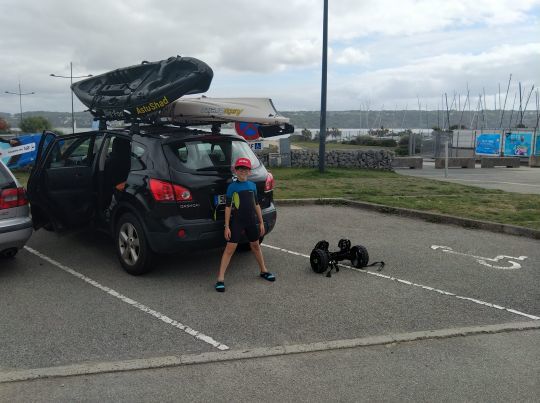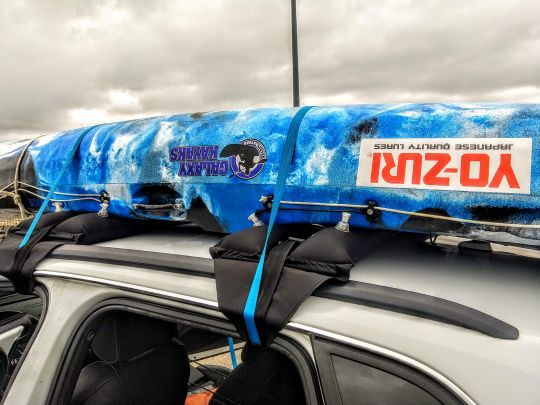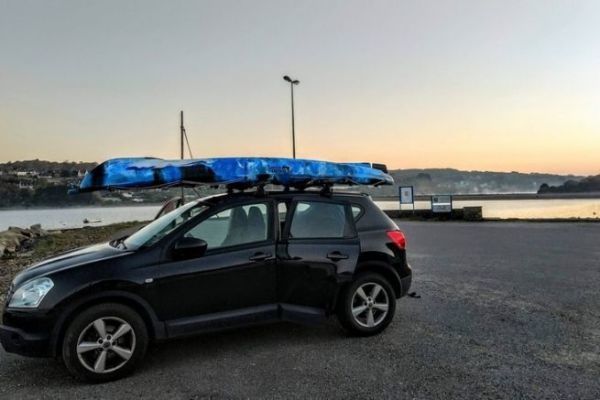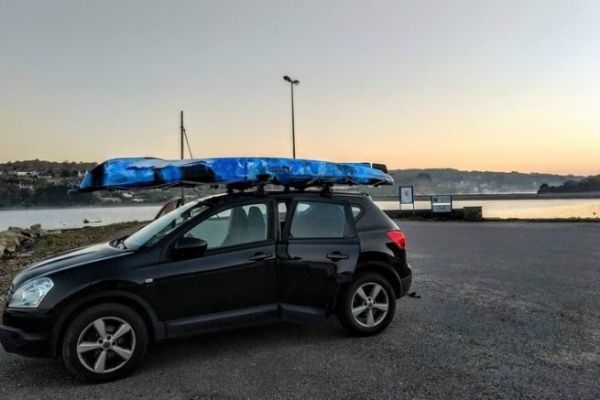A point to consider
When we decide to buy our first kayak, we often only see the leisure aspect of the thing, the future moments of pleasure that we will live on the water.
But before that, this famous kayak, it will be necessary to transport it in safety until the launching on the roof of the car. Then from the car to the shore, and that, without damaging our float, our vehicle and also our back. Of course, it is also necessary to respect the regulations concerning the road safety on the transport of material. We are going to speak here only about the transport on a gallery which is the most used.

The regulation
The objects transported on a roof rack must not exceed the overall width of the vehicle, at the front it must not exceed the front bumper and at the rear, it is allowed a maximum of one meter. You must also respect the maximum load allowed depending on the vehicle and the type of roof rack.
Mount your kayak on the gallery
Putting a kayak on a gallery is more a matter of gesture than pure strength, at least for floats up to 40 kg. For the heavier ones, there are a number of aids and tricks to put them up without destroying your back. The best known and most affordable are the suction rollers that are placed on the rear window and on which the kayak slides until it is correctly positioned on the bars.
There is also a system of telescopic bar in the front bar, we put the front of the kayak on it then we lift the back and we position it on the gallery. More sophisticated systems exist, but the price is not the same.

Find the right gallery
Very often, the roof racks are adapted to the vehicle according to the brand, avoid the racks with bars too close together or your kayak will swing at every bump. Add protective foam to the roof rails. This is to protect the flat edges of the float when tightening with the straps.

For the straps, I recommend the ratchet straps which allow to control the tightening at best with the habit of the outings. Two straps are enough, they will go around the bars then pass through the self-bouncers, then above the board. Thus tightened, your board will not move, so make sure that your straps are in perfect condition. Any trace of defect on the fabric of the straps imposes the disposal of the said strap. For long trips, I have taken the habit of doubling the strap at the front.

Preferably put your kayak upside down on the bars, it's more aerodynamic, the kayak will naturally be placed on it with the speed. For occasional transport, there are also inflatable racks, you just need to have a 4-door car. These roof racks can support up to 80 kg and are easily installed in a few minutes.
The portage cart

Here again, it is essential to choose a cart adapted to the weight carried and to the type of terrain of your spots.
The choice is vast and will be covered in a future article. Don't forget to put this part of the equation in your purchase preparation form, between the gallery bars, the protections, the straps, the transport cart adapted to your needs, it represents a nice sum to add in the global budget, think about it beforehand.
In the meantime, find an explanatory video on how to transport your kayak:

 /
/ 










